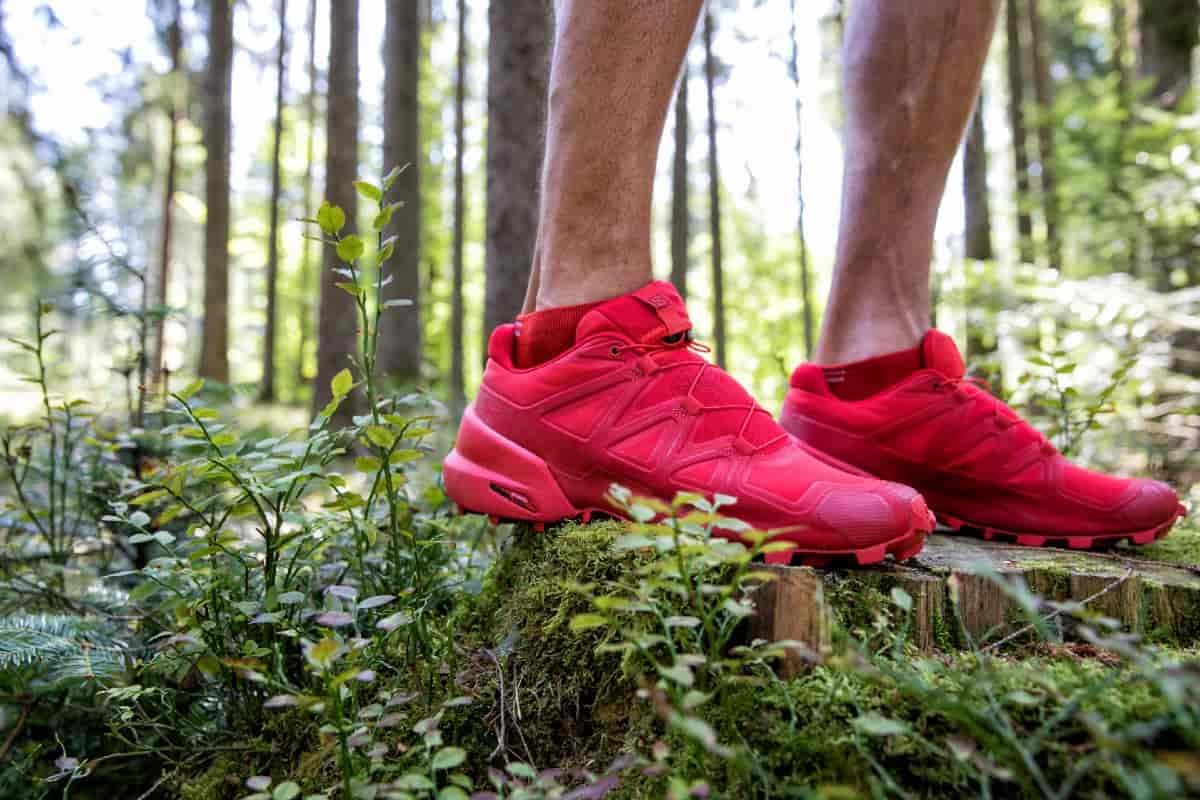To a lot of people, trail shoes are frequently confused with their cousins, running shoes. However, to those with experience in the industry, the debate of which one is best seems unending. To make a judgment of trail shoes vs running shoes, it is essential to have a solid understanding of the distinctions between running shoes and trail running shoes. There are a number of key distinctions that can be found between running shoes and trail running shoes; as a general rule, runners choose the style of running shoe that is most appropriate for the environment in which they will be running. Running shoes intended for use on roads are typically designed to be more rigid and provide a smoother ride than trail running shoes, which are better suited for traversing more rugged and uneven terrain. Comparing the outsoles of trail running shoes with regular running shoes The outsole and the midsole are the two components that make up the sole of a pair of running shoes. In road running shoes and trail running shoes, each of these components will be structured and designed differently, making the shoes more appropriate for the type of terrain that they will be used for when running. The component of your shoe that makes direct touch with the surface you are walking on is called the outsole. Therefore, a trail running shoe has to have better traction or grip since runners will be on a variety of surfaces, such as wet rock, dirt, grass, stoney trails, and steep slopes. Runners will also be climbing steep hills. When you look at the outsole of a trail running shoe, you'll notice that it has a specific design, such as lugs or studs, to provide traction on uneven ground. Trail running shoes typically have a compound on the sole that is more sticky than normal in order to provide runners with increased grip on rocky and uneven terrain. The lugs on trail running shoes are designed to be different depths depending on the terrain that the shoes are intended for, which can range from rough park paths to mountain tracks. Other types of trail running shoes, such as those made with graphene, are designed to improve a runner's grip on a variety of terrains. On the other hand, a running shoe designed for roads will typically have a more even and smooth sole. Tarmac presents a significantly lower need for traction, and as a result, the focus of the running shoe will be on a cadence that is both smooth and quick. When compared to regular running shoes, trail running shoes offer superior cushioning.
The component of your shoe that makes direct touch with the surface you are walking on is called the outsole. Therefore, a trail running shoe has to have better traction or grip since runners will be on a variety of surfaces, such as wet rock, dirt, grass, stoney trails, and steep slopes. Runners will also be climbing steep hills. When you look at the outsole of a trail running shoe, you'll notice that it has a specific design, such as lugs or studs, to provide traction on uneven ground. Trail running shoes typically have a compound on the sole that is more sticky than normal in order to provide runners with increased grip on rocky and uneven terrain. The lugs on trail running shoes are designed to be different depths depending on the terrain that the shoes are intended for, which can range from rough park paths to mountain tracks. Other types of trail running shoes, such as those made with graphene, are designed to improve a runner's grip on a variety of terrains. On the other hand, a running shoe designed for roads will typically have a more even and smooth sole. Tarmac presents a significantly lower need for traction, and as a result, the focus of the running shoe will be on a cadence that is both smooth and quick. When compared to regular running shoes, trail running shoes offer superior cushioning. The portion of the running shoe that is located between the outsole and the insole is referred to as the midsole. This region of the running shoe offers the greatest amount of shock absorption and cushioning. In most cases, it is constructed out of foam, and the degree to which it cushions the user may be adjusted in a variety of different ways. Because they are designed to be worn on hard terrain, running shoes intended for the road often have a greater amount of cushioning than trail running shoes do. Meanwhile, trails often have a softer surface underfoot and produce lower amounts of pounding impact, which is why trail running shoes typically have less cushioning than other types of running shoes. Additionally, the sense of proprioception is also vital for trail running. The term "proprioception" refers to the way in which the muscles, tendons, and joints of the body work together to produce awareness on uneven surfaces. Proprioception is also referred to as the feeling of self-movement and body position. Because you need to be able to trust your footwear and have a feeling of where your foot is while you are running off-road, it is often preferable to have less padding underfoot and more "ground feel."
The portion of the running shoe that is located between the outsole and the insole is referred to as the midsole. This region of the running shoe offers the greatest amount of shock absorption and cushioning. In most cases, it is constructed out of foam, and the degree to which it cushions the user may be adjusted in a variety of different ways. Because they are designed to be worn on hard terrain, running shoes intended for the road often have a greater amount of cushioning than trail running shoes do. Meanwhile, trails often have a softer surface underfoot and produce lower amounts of pounding impact, which is why trail running shoes typically have less cushioning than other types of running shoes. Additionally, the sense of proprioception is also vital for trail running. The term "proprioception" refers to the way in which the muscles, tendons, and joints of the body work together to produce awareness on uneven surfaces. Proprioception is also referred to as the feeling of self-movement and body position. Because you need to be able to trust your footwear and have a feeling of where your foot is while you are running off-road, it is often preferable to have less padding underfoot and more "ground feel." However, there are certain trail running shoes, particularly those made by Hoka One One and other manufacturers that feature above-average amounts of cushioning in comparison to others in their category. There are also road running shoes that have reduced levels of cushioning, such as a lightweight and minimalist road running shoe that is meant for races, as opposed to a road running shoe that will be used for ultra-distance running training and races. Another example of this would be a road running shoe that is meant for races but has a higher level of cushioning. Furthermore, it will be determined by the requirements of the runner. While some runners prefer greater cushioning whether they are running on trails or asphalt, some runners prefer less cushioning that keeps them in touch with the ground and choose more minimalist running shoes. When deciding whether to go for the finest trail running shoes or the best road running shoes, it's generally a matter of personal preference. In comparison to regular running shoes, trail running shoes have a lower heel-to-toe drop.
However, there are certain trail running shoes, particularly those made by Hoka One One and other manufacturers that feature above-average amounts of cushioning in comparison to others in their category. There are also road running shoes that have reduced levels of cushioning, such as a lightweight and minimalist road running shoe that is meant for races, as opposed to a road running shoe that will be used for ultra-distance running training and races. Another example of this would be a road running shoe that is meant for races but has a higher level of cushioning. Furthermore, it will be determined by the requirements of the runner. While some runners prefer greater cushioning whether they are running on trails or asphalt, some runners prefer less cushioning that keeps them in touch with the ground and choose more minimalist running shoes. When deciding whether to go for the finest trail running shoes or the best road running shoes, it's generally a matter of personal preference. In comparison to regular running shoes, trail running shoes have a lower heel-to-toe drop. The change in thickness of the midsole that occurs from the heel to the toe is referred to as the "heel-to-toe drop." The Achilles tendon and the legs are protected from the hammering impact of running on the asphalt by road running shoes, which typically have a wider drop than trail running shoes. When compared to road running shoes, trail running shoes often have a lower heel-to-toe drop, which brings the foot closer to the surface it is running on. This not only serves to give increased ankle stability, but it also helps to boost a runner's proprioception, as was mentioned before. The medial post of trail running shoes is higher than that of running shoes. The medial post is an insert made of foam with a higher density that is placed on the medial side of the shoe's midsole (which is also known as the inner of the shoe). Depending on how you run, the medial post should help you maintain proper pronation control by preventing excessive rolling in the foot. The majority of trail running shoes do not include a medial post since there is no need to impede the natural mobility and movement of the foot. On the other hand, road running shoes that are designated as "stability road shoes" will feature a medial post.
The change in thickness of the midsole that occurs from the heel to the toe is referred to as the "heel-to-toe drop." The Achilles tendon and the legs are protected from the hammering impact of running on the asphalt by road running shoes, which typically have a wider drop than trail running shoes. When compared to road running shoes, trail running shoes often have a lower heel-to-toe drop, which brings the foot closer to the surface it is running on. This not only serves to give increased ankle stability, but it also helps to boost a runner's proprioception, as was mentioned before. The medial post of trail running shoes is higher than that of running shoes. The medial post is an insert made of foam with a higher density that is placed on the medial side of the shoe's midsole (which is also known as the inner of the shoe). Depending on how you run, the medial post should help you maintain proper pronation control by preventing excessive rolling in the foot. The majority of trail running shoes do not include a medial post since there is no need to impede the natural mobility and movement of the foot. On the other hand, road running shoes that are designated as "stability road shoes" will feature a medial post.
💰 Tenfold your income 💎
